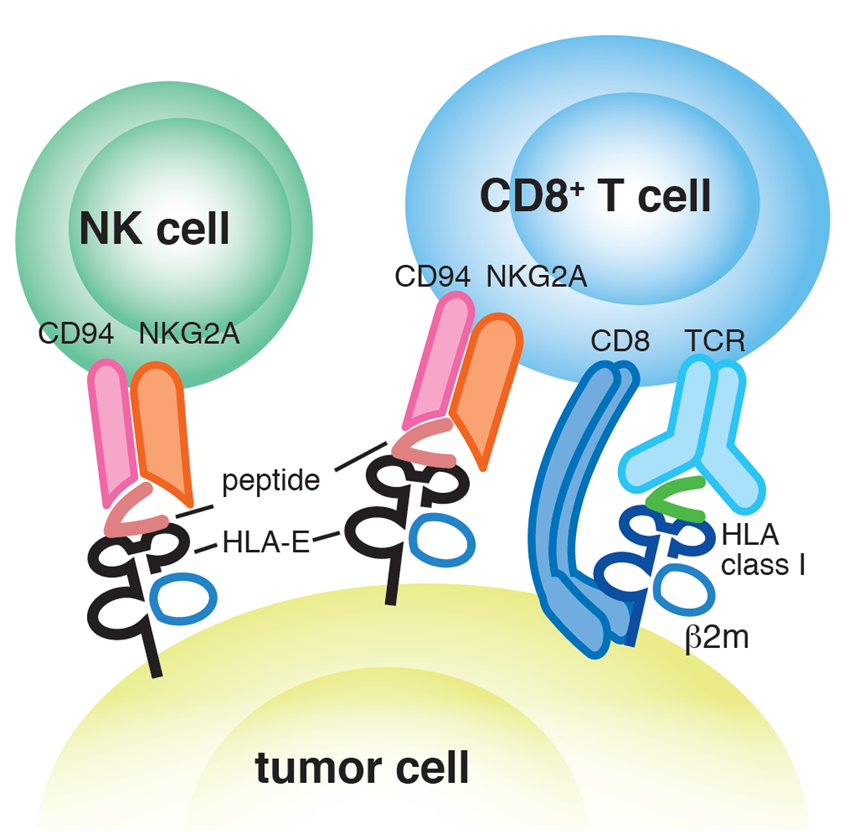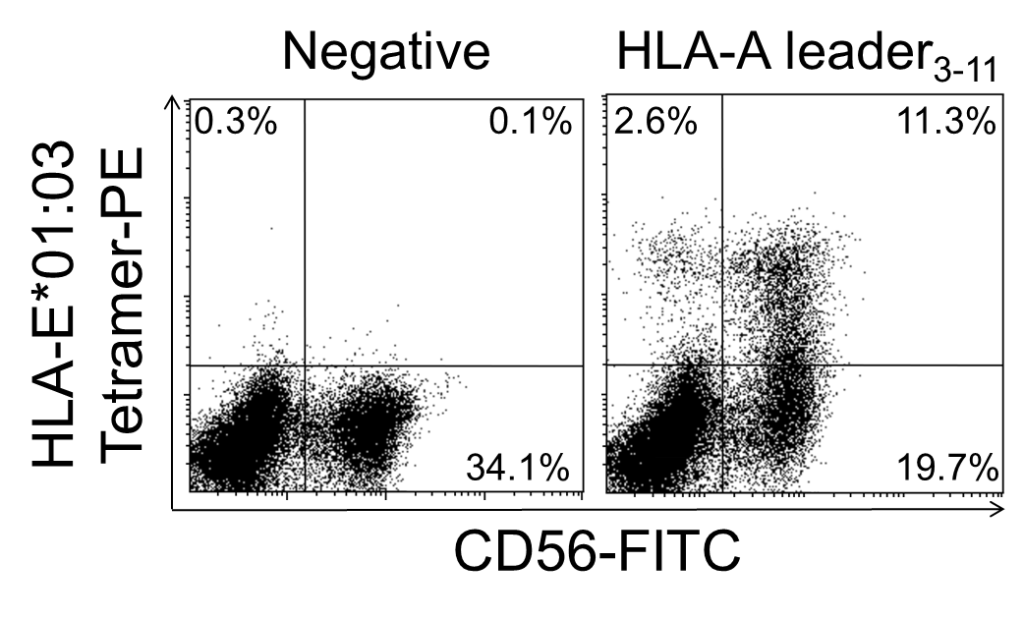Non-classical MHC: HLA-E and Qa-1b

Human leukocyte antigen E (HLA-E) is a non-classical class I molecule recognised by natural killer (NK) cells and CD8+ T cells. HLA-E is expressed in almost all tissues including lung, liver, skin and placental cells. HLA-E expression is also detected in solid tumors (e.g., osteosarcoma and melanoma). HLA-E binds to TCR expressed on CD8+ T cells, resulting in the T cell activation. HLA-E is also known to bind CD94/NKG2 receptor expressed on NK cells and CD8+ T cells. CD94 can pair with several different isoforms of NKG2 to form receptors with potential to either inhibit (NKG2A, NKG2B) or promote (NKG2C) cellular activation.
HLA-E preferably binds to a peptide derived from amino acid residues of the leader sequences of most HLA-A, -B, -C, and -G molecules, but cannot bind its own leader peptide. Under physiological conditions, the engagement of CD94/NKG2A with HLA-E, loaded with peptides from the HLA class I leader sequences, usually induces inhibitory signals. Cytomegalovirus (CMV) utilizes the mechanism for escape from NK cell immune surveillance via expression of the UL40 glycoprotein, mimicking the HLA-A leader. However, it is also reported that CD8+ T cells can recognise HLA-E loaded with the UL40 peptide derived from CMV Toledo strain and play a role in defense against CMV. A number of studies revealed several important functions of HLA-E in infectious disease and cancer.
The HLA-E tetramer is comprised of human class I HLA-E*01:03 and epitope peptide derived from the HLA-A leader, and it can detect HLA-E*01:03-restricted HLA-A leader-specific NK cells and CD8+ T cells by flow cytometry.
The non-classical class I mouse homolog of HLA-E tetramer, Qa-1b tetramer, is now available.

For Research Use Only. Not for use in diagnostic procedures.
References
- Miller JD, et al. J Immunol 171: 1369-1375 (2003)
- Braud VM, et al. Nature 391: 795-799 (1998)
- Lee N, et al. PNAS 95: 5199-5204 (1998)
- Tomasec P, et al. Science 287: 1031-1033 (2000)
- Heinzel AS, et al. J Exp Med 196: 1473-1481 (2002)
- Pietra G, et al. PNAS 100: 10896-10901 (2003)
- Salerno-Gonçalves R, et al. J Immunol 173: 5852-5862 (2004)
- Derré L, et al. J Immunol 177: 3100-3107 (2006)
- Monaco EL, et al. Neoplasia 13: 822-830 (2011)
- Weder P, et al. Results in Immunology 2: 88-96 (2012)
View the other types of MHC Molecules
| Class I | Class II | CD1D |
MBL Products are distributed throughout Europe by Caltag Medsystems Ltd. If you have any questions about the products in this blog, please contact us and we’ll be happy to help!
